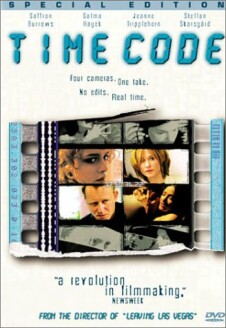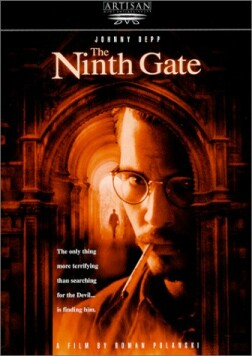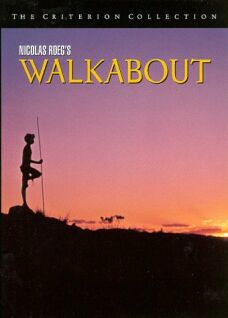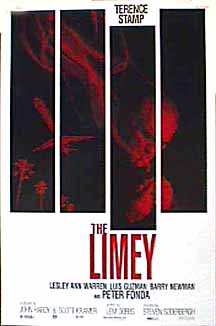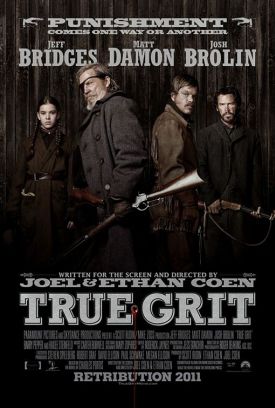Timecode
Artistic innovation tends to follow a pattern, which begins with the reaction
of the young rebels against the prevailing style, after its tricks become too
familiar. So Wordsworth and Coleridge’s manifesto in the preface to the 1798
edition of Lyrical Ballads drew attention to the tired “poetic diction”
of the time and called for a new poetry based on “the real language of men.”
Always, artists want to feel more directly in touch with the realities their art
purports to represent, to do away with intermediaries and filters between them
and it. We can see a similar process at work in what would once have been called
the “experimental” (the word is itself one of the old tricks that now seem
outmoded) Timecode, directed by Mike Figgis. The very high-concept of this interesting film is to replace standard
cinematic montage with unedited footage from four separate digital cameras, all
showing on the screen, in four separate panels, at the same time. By moving our
eyes from one panel to the other, partly guided by audio cues, we do the editing
as we watch. Periodically Southern Californian earth tremors violate the
separateness of the narrative threads by affecting the people in all four panels
at once, but for the most part the experience is like that of watching a bank of
monitors connected to surveillance cameras, and this seems to me to be no
accident, since it must be a part of Figgis’s intention by the device to
recreate in his audience some of that sense of watching illegitimately, like a
voyeur, people that don’t know they’re being watched.
In this, I take it, although he is embracing certain postmodern tropes and
techniques (for instance, having the plot of the film reach its climax at the
moment when someone is pitching what is essentially his film to a room full of
Hollywood executives), he is also aiming a dart at the very heart of postmodern
film-making, which up until now has been a matter of breaking down the barriers
between audience and actors, of attempting to get at a larger authenticity by
showing us the artifice of the filmmaker’s art with a nod and a wink that makes
us complicit in that artifice.
In the making of Figgis’s film we are complicit to an even greater extent,
since we are in effect doing the editing for him as we go along. But the effect
of doing so is to put up new barriers between ourselves and the actors on the
screen. We are put more emphatically than ever into the position of the watcher,
the actors into that of the watched. The impression is reinforced by the
unaccustomed smallness of the figures that they cut on a screen reduced to a
quarter of its normal size. Something hitherto inseparable from the cinematic
experience, its larger-than-life quality, has gone and the impression of the
little actors and their little problems instead makes us seem larger. In
fact, god-like, since not only do we have the sense of watching private moments
in people’s lives without their permission but also that of composing their
story as we watch.
To give some idea of how strange an experience this is, I thought of offering
my readers a chance to compose the rest of this review by simply reproducing my
notes in raw form, in four columns headed t/l, t/r, b/l, b/r to signify the four
quarters of the screen and what is going on in them at any given moment. But I
find that I have many pages of such notes, and following them to the end would
be tedious. The movie itself is less so because of all that we leave out as we
focus our attention from one panel to another, but we are still aware, as we so
seldom are in real life, of how much we are missing of a story that, in its
essence is a simple contemporary melodrama of domestic jealousy and
revenge.
Or is it? Here is the story as I made it out. Alex (Stellan Skarsgard) is a
Hollywood executive married to Emma (Saffron Burrows). Their marriage is a
troubled one, and Emma is seeing a therapist (Glenne Headly), to whom she
describes some remarkable dreams she has had of her husband. Somewhere else in
one of the more opulent sections of greater Los Angeles we see Lauren (Jeanne
Tripplehorn) letting the air out of the tires of a BMW belonging to Rose (Salma
Hayek) and then retreating to a limousine. Rose, an actress, is late for an
audition and Lauren, pretending to be dismayed about the car, offers her a lift.
As they ride in the limousine together, their conversation makes us realize that
they are lovers, and that Lauren is supporting the impecunious Rose in lavish
style while suspicious that she is cheating on her. She has got her into the car
in order to plant a bug on her.
As the limousine arrives at the scene of the audition, we see that the bottom
half of the screen represents two views of the building where it is arriving:
one shows us the board room, in which a masseur (Julian Sands) is offering his
services to the staff of Red Mullet films — who are impatiently waiting for
Alex to arrive — while in the other a security guard is selling cocaine to a
blonde actress who has also come for an audition. Alex calls on his cell phone
but asks his assistant (Holly Hunter) to tell the others who are waiting that
they have a bad connection. He is intent on meeting Rose, with whom he is having
an affair. Lauren at first cannot hear their encounter through her headphones
because a screening is in progress in the adjoining room, but she finally
realizes that her suspicions have been correct.
Alex, on parting from Rose, agonizes about his women and other problems and
goes into the street to smoke a cigarette. There he runs into Lauren, also
smoking, and agitated by the revelation of Rose’s infidelity. The two do not
know each other. But soon Lauren gets a gun and goes looking for the unknown
Alex, which leads to a dramatic climax.
But there is an awful lot of other stuff going on in the meantime, and the
viewer must not only miss a lot but know that he is missing a lot. One is aware
of Emma’s arrival at her husband’s offices, their discussion about going to
Italy and, later, her taking up with the blonde actress who bought the cocaine.
One notices that the two of them meet a friend of Emma’s and Alex’s, Bunny
Drysdale (Kyle MacLachlan), who tries to pick Emma up. Bunny is escorting the
intellectual Ana (Mia Maestro) and her white rapper boyfriend, Joey Z
(Alessandro Nivola) to the Red Mullet board meeting, and there Ana makes her
pitch, full of deconstructionist jargon, for the movie that sounds like Timecode to Alex and the others.
But how much more has one missed? The sense of multiple intertwined realities
constantly modifying one another is exhausting, but rather exhilarating at the
same time. One scarcely has time to notice the postmodern joke of having Alex
break up into uncontrollable giggling in response to Ana’s pitch. “That’s the
most pretentious crap I’ve ever heard of,” he says. And it would be, too, if we
hadn’t just witnessed the idea of the film that the pretentious crap is masking
work so persuasively. Putting the story together as we watch it is a new
cinematic experience that masks any lingering doubt as to whether or not the
story has been worth the telling. Like voyeurs or small children, or perhaps
God, we find excitement just in seeing it unfold.
Discover more from James Bowman
Subscribe to get the latest posts to your email.

